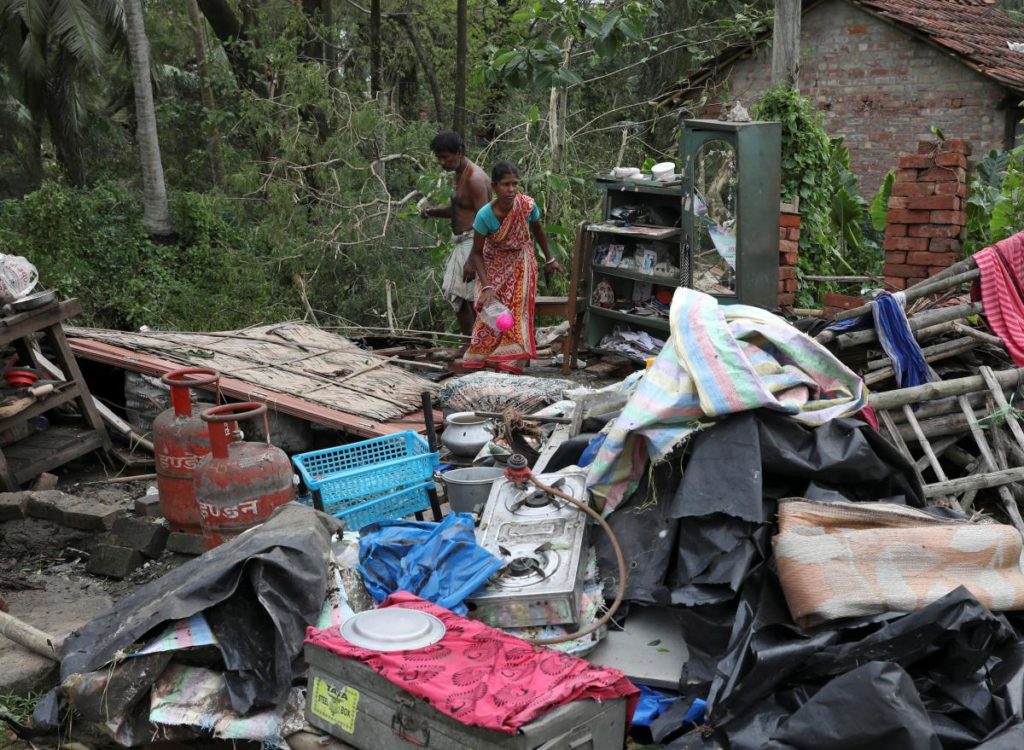Indian authorities on Friday began assessing damage and clearing roads in the wake of Cyclone Amphan, which killed at least 95 people and left millions displaced after barreling through the coastal communities of eastern India and neighbouring Bangladesh.
In West Bengal state, which bore the brunt of the storm that caused extensive flooding in its capital Kolkata, police and teams from India’s national disaster response force removed fallen trees and other debris, repaired communication lines and started getting hundreds of thousands of people out of shelters.
India’s Prime Minister Narendra Modi left New Delhi to conduct an aerial survey of the worst-hit areas of West Bengal and Odisha states. It was Modi’s first trip outside the national capital after a coronavirus lockdown was imposed in late March.
Modi promised Thursday that “no stone will be left unturned in helping the affected”.
In an initial assessment, officials in Bangladesh said the cyclone caused about $130 million in damage to infrastructure, housing, fisheries, livestock, water resources and agriculture. The full extent of the damage along India’s eastern coast was not immediately known.
‘Worse than coronavirus’
At least 95 people were killed. West Bengal reported 72 deaths — including 15 in Kolkata — with state premier Mamata Banerjee saying: “I haven’t seen a disaster of this magnitude.”
Banerjee earlier described the cyclone’s impact as “worse than coronavirus”.
Twenty-three people have died in Bangladesh, according to the official death toll.
The United Nations office in Bangladesh estimates 10 million people were affected, and some 500,000 people may have lost their homes.
But the death toll was far lower than the many thousands killed in previous cyclones — a result of improved weather forecasting and better response plans.
The disaster has raised fears, however, that overcrowding in storm shelters will exacerbate the spread of Covid-19.
“The coronavirus has already taken a toll on people. Now the cyclone has made them paupers,” Bhabotosh Kumar Mondal, a local councillor in West Bengal, told AFP.
In 1999, a super cyclone that hit the area left nearly 10,000 dead in India’s Odisha state, eight years after a typhoon, tornadoes and flooding killed 139,000 in Bangladesh.
